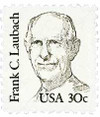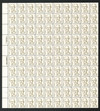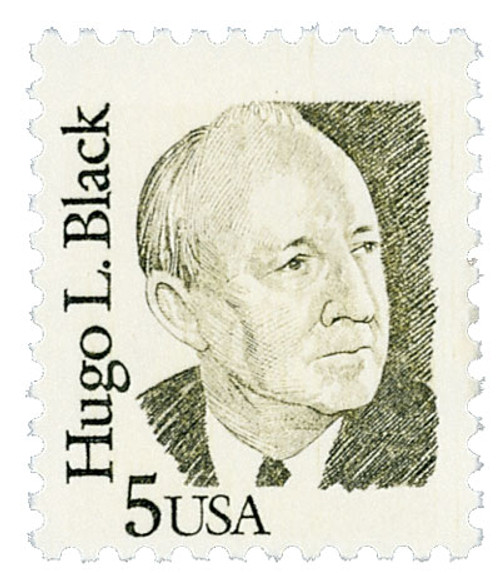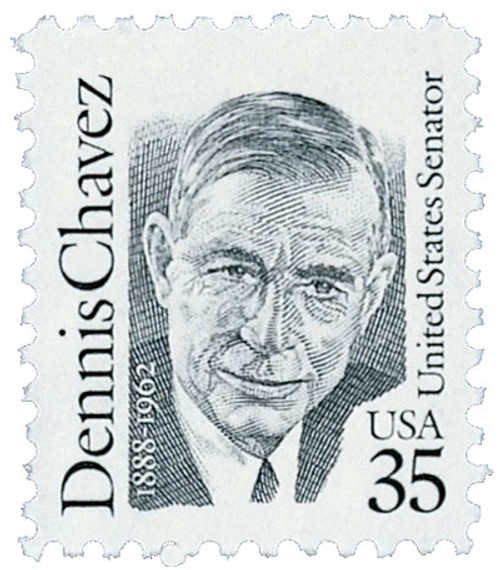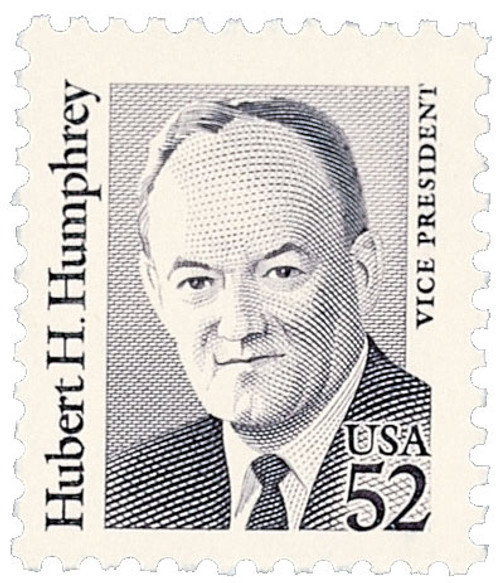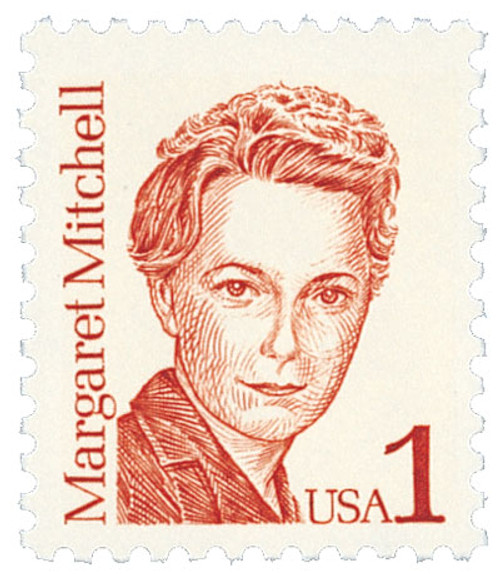
# 1864 - 1984 30c Great Americans: Frank C. Laubach
U.S. #1864
1984 30¢ Frank C. Laubach
Great Americans
- 17th stamp in the Great Americans Series
- Issued on 100th birthday
- Laubach, a teacher, replaced 1977 30¢ Americana schoolhouse stamp
Stamp Category: Definitive
Series: Great Americans
Value: 30¢
First Day of Issue: September 2, 1984
First Day City: Benton, Pennsylvania
Quantity Issued: 80,000,000
Printed by: Bureau of Engraving & Printing
Printing Method: Engraved
Format: Panes of 100
Perforations: 11
Color: Olive gray
Why the stamp was issued: Kenneth McCahan, president of the Laubach Memorial Library in Laubach’s hometown of Benton, Pennsylvania, was one of the driving forces behind this stamp’s creation. He and other residents of Benton had petitioned the USPS for a stamp honoring Laubach for at least two years before the stamp was finally issued. While there had been rumors in 1983 that the stamp was likely to be produced the following year, in January 1984, the USPS said that the stamp would only happen if there was a rate increase.
Undeterred, McCahan launched a large-scale campaign. He encouraged teachers across the country to have their students write letters to the postmaster general. McCahan also spoke to senators, representatives and others, hoping to “get in the ear of President Reagan” to help push the stamp forward. Several Pennsylvania newspapers also ran images of a proposed Laubach stamp with the word “canceled” across it. By February, the overwhelming support for the stamp led the USPS to walk back their previous statement and agree to issue the Laubach stamp later that year. When asked what it took to get the stamp made, McCahan later said, “Prayer, patience, persistence, and politics.”
About the stamp design: Richard Sparks created this stamp image based on several different photographs of Frank Laubach.
First Day City: The First Day ceremony for this stamp was held at the Benton Junior-Senior High School in Laubach’s hometown of Benton, Pennsylvania. The ceremony marked the start of a week-long centennial birthday celebration in Laubach’s honor.
About the Great Americans Series: The Great Americans Series was created to replace the Americana Series. The new series would be characterized by a standard definitive size, simple design, and monochromatic colors.
This simple design included a portrait, “USA,” the denomination, the person’s name, and in some cases, their occupation or reason for recognition. The first stamp in the new series was issued on December 27, 1980. It honored Sequoyah and fulfilled the new international postcard rate that would go into effect in January 1981.
The Great Americans Series would honor a wider range of people than the previous Prominent Americans and Liberty Series. While those series mainly honored presidents and politicians, the Great Americans Series featured people from many fields and ethnicities. They were individuals who were leaders in education, the military, literature, the arts, and human and civil rights. Plus, while the previous series only honored a few women, the Great Americans featured 15 women. This was also the first definitive series to honor Native Americans, with five stamps.
The Bureau of Engraving and Printing (BEP) produced most of the stamps, but private firms printed some. Several stamps saw multiple printings. The result was many different varieties, with tagging being the key to understanding them. Though there were also differences in perforations, gum, paper, and ink color.
The final stamp in the series was issued on July 17, 1999, honoring Justin S. Morrill. Spanning 20 years, the Great Americans was the longest-running US definitive series. It was also the largest series of face-different stamps, with a total of 63.
Click here for all the individual stamps and click here for the complete series.
History the stamp represents: Missionary Frank Charles Laubach was born on September 2, 1884, in Benton, Pennsylvania.
Laubach attended Princeton University and Union Theological Seminary before earning a PhD from Columbia University in 1915. That same year, he and his wife traveled to the Philippines to serve as Congregational missionaries with the American Board of Commissioners for Foreign Missions.
While working in the Philippines, Laubach was troubled by the poverty, injustice, and illiteracy he saw, which he believed were barriers to peace. In particular, Laubach was most concerned with illiteracy and made it his life’s work to help people learn to read. In 1930 he developed an alphabet for the Maranaw people of Mindanao, Philippines. He would then spend the next 40 years visiting more than 100 countries creating literacy primers (books) for 312 languages. During this time, he worked with different missions, private agencies, governments, USAID, the Peace Corps, and UNESCO.
One of Laubach’s most significant contributions was his “Each One Teach One” program. While he didn’t invent the phrase (it dates back to before the Civil War), he used it to encourage every adult that learned the language to then volunteer their time to teach others. Over the years, this program has helped about 60 million people learn to read in their native language.
During his career, Laubach created the World Literacy Committee and helped found the Committee on World Literacy and Christian Literature of the National Council of Churches. He also founded World Literacy, Inc. and Laubach Literacy, Inc. Laubach is often considered to be the founder of the worldwide literacy movement. He spent his later years traveling the world speaking about illiteracy and its connection to poverty and world peace. He died on June 11, 1970.
U.S. #1864
1984 30¢ Frank C. Laubach
Great Americans
- 17th stamp in the Great Americans Series
- Issued on 100th birthday
- Laubach, a teacher, replaced 1977 30¢ Americana schoolhouse stamp
Stamp Category: Definitive
Series: Great Americans
Value: 30¢
First Day of Issue: September 2, 1984
First Day City: Benton, Pennsylvania
Quantity Issued: 80,000,000
Printed by: Bureau of Engraving & Printing
Printing Method: Engraved
Format: Panes of 100
Perforations: 11
Color: Olive gray
Why the stamp was issued: Kenneth McCahan, president of the Laubach Memorial Library in Laubach’s hometown of Benton, Pennsylvania, was one of the driving forces behind this stamp’s creation. He and other residents of Benton had petitioned the USPS for a stamp honoring Laubach for at least two years before the stamp was finally issued. While there had been rumors in 1983 that the stamp was likely to be produced the following year, in January 1984, the USPS said that the stamp would only happen if there was a rate increase.
Undeterred, McCahan launched a large-scale campaign. He encouraged teachers across the country to have their students write letters to the postmaster general. McCahan also spoke to senators, representatives and others, hoping to “get in the ear of President Reagan” to help push the stamp forward. Several Pennsylvania newspapers also ran images of a proposed Laubach stamp with the word “canceled” across it. By February, the overwhelming support for the stamp led the USPS to walk back their previous statement and agree to issue the Laubach stamp later that year. When asked what it took to get the stamp made, McCahan later said, “Prayer, patience, persistence, and politics.”
About the stamp design: Richard Sparks created this stamp image based on several different photographs of Frank Laubach.
First Day City: The First Day ceremony for this stamp was held at the Benton Junior-Senior High School in Laubach’s hometown of Benton, Pennsylvania. The ceremony marked the start of a week-long centennial birthday celebration in Laubach’s honor.
About the Great Americans Series: The Great Americans Series was created to replace the Americana Series. The new series would be characterized by a standard definitive size, simple design, and monochromatic colors.
This simple design included a portrait, “USA,” the denomination, the person’s name, and in some cases, their occupation or reason for recognition. The first stamp in the new series was issued on December 27, 1980. It honored Sequoyah and fulfilled the new international postcard rate that would go into effect in January 1981.
The Great Americans Series would honor a wider range of people than the previous Prominent Americans and Liberty Series. While those series mainly honored presidents and politicians, the Great Americans Series featured people from many fields and ethnicities. They were individuals who were leaders in education, the military, literature, the arts, and human and civil rights. Plus, while the previous series only honored a few women, the Great Americans featured 15 women. This was also the first definitive series to honor Native Americans, with five stamps.
The Bureau of Engraving and Printing (BEP) produced most of the stamps, but private firms printed some. Several stamps saw multiple printings. The result was many different varieties, with tagging being the key to understanding them. Though there were also differences in perforations, gum, paper, and ink color.
The final stamp in the series was issued on July 17, 1999, honoring Justin S. Morrill. Spanning 20 years, the Great Americans was the longest-running US definitive series. It was also the largest series of face-different stamps, with a total of 63.
Click here for all the individual stamps and click here for the complete series.
History the stamp represents: Missionary Frank Charles Laubach was born on September 2, 1884, in Benton, Pennsylvania.
Laubach attended Princeton University and Union Theological Seminary before earning a PhD from Columbia University in 1915. That same year, he and his wife traveled to the Philippines to serve as Congregational missionaries with the American Board of Commissioners for Foreign Missions.
While working in the Philippines, Laubach was troubled by the poverty, injustice, and illiteracy he saw, which he believed were barriers to peace. In particular, Laubach was most concerned with illiteracy and made it his life’s work to help people learn to read. In 1930 he developed an alphabet for the Maranaw people of Mindanao, Philippines. He would then spend the next 40 years visiting more than 100 countries creating literacy primers (books) for 312 languages. During this time, he worked with different missions, private agencies, governments, USAID, the Peace Corps, and UNESCO.
One of Laubach’s most significant contributions was his “Each One Teach One” program. While he didn’t invent the phrase (it dates back to before the Civil War), he used it to encourage every adult that learned the language to then volunteer their time to teach others. Over the years, this program has helped about 60 million people learn to read in their native language.
During his career, Laubach created the World Literacy Committee and helped found the Committee on World Literacy and Christian Literature of the National Council of Churches. He also founded World Literacy, Inc. and Laubach Literacy, Inc. Laubach is often considered to be the founder of the worldwide literacy movement. He spent his later years traveling the world speaking about illiteracy and its connection to poverty and world peace. He died on June 11, 1970.








